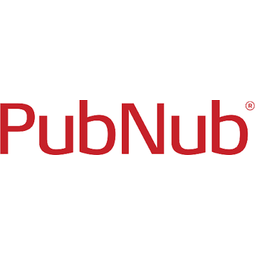下载PDF
Beamable Leverages PubNub to Enhance Game Development Experience
技术
- 基础设施即服务 (IaaS) - 云计算
- 平台即服务 (PaaS) - 应用开发平台
适用行业
- 水泥
- 建筑与基础设施
适用功能
- 产品研发
用例
- 施工管理
- 基础设施检查
挑战
Beamable 是一个直播游戏服务器平台,最初是一家将流行娱乐品牌转变为成功游戏的游戏开发商。他们了解游戏开发的挑战,包括创建引人入胜的故事、编写软件以及为许多单独的组件构建基础设施。游戏服务器需要复杂的功能、工具和性能特征。确保工具直观、技术易于实施且大规模执行具有挑战性。 2015 年,Beamable 平台的增长速度超出了其之前的发布/订阅解决方案的处理能力。他们需要一个与 Unity 兼容的发布/订阅系统将信息从服务器推送到客户端。他们还需要强大的 Unity SDK、可以忽略的基础设施,以及支持其发展而无需担心经济处罚的灵活定价。
关于客户
Beamable 是一个实时游戏服务器平台,适合希望将实时游戏功能和工作流程构建到 Unity 或 Unreal 游戏项目中的开发人员。它们为游戏开发者提供了在游戏中快速添加社交、商务和内容管理的能力。最初,Beamable 是一家游戏开发商,将《星际迷航》和《权力的游戏》等流行娱乐品牌转变为非常成功的游戏。在开发了多款成功的游戏后,他们了解了其中的挑战,并推出了一项新业务,帮助其他开发者消除基于服务器的游戏技术的困难创建,以便创作者能够专注于游戏的差异化优势。
解决方案
Beamable 选择与 PubNub 合作,在之前的游戏中使用了他们的聊天功能。 PubNub 能够适应 Beamable 的需求,即使用共同的主干网络来拥有潜在的数百或数千个游戏。如今,Beamable 使用 PubNub 为所有服务器到客户端消息传递提供重要的基础设施,实时同步后端和最终用户客户端之间的状态。这包括聊天等常见应用程序或更多幕后功能,例如在有新内容更新可用或特定玩家收到新消息、项目或优惠时通知客户。借助 PubNub,Beamable 可以提供流畅的体验、高度反应性的应用程序,以及为全球玩家打造新颖体验的能力。他们对 PubNub 99.999% SLA 的可靠性充满信心。
运营影响
数量效益
相关案例.

Case Study
System 800xA at Indian Cement Plants
Chettinad Cement recognized that further efficiencies could be achieved in its cement manufacturing process. It looked to investing in comprehensive operational and control technologies to manage and derive productivity and energy efficiency gains from the assets on Line 2, their second plant in India.

Case Study
IoT System for Tunnel Construction
The Zenitaka Corporation ('Zenitaka') has two major business areas: its architectural business focuses on structures such as government buildings, office buildings, and commercial facilities, while its civil engineering business is targeted at structures such as tunnels, bridges and dams. Within these areas, there presented two issues that have always persisted in regard to the construction of mountain tunnels. These issues are 'improving safety" and "reducing energy consumption". Mountain tunnels construction requires a massive amount of electricity. This is because there are many kinds of electrical equipment being used day and night, including construction machinery, construction lighting, and ventilating fan. Despite this, the amount of power consumption is generally not tightly managed. In many cases, the exact amount of power consumption is only ascertained when the bill from the power company becomes available. Sometimes, corporations install demand-monitoring equipment to help curb the maximum power demanded. However, even in these cases, the devices only allow the total volume of power consumption to be ascertained, or they may issue warnings to prevent the contracted volume of power from being exceeded. In order to tackle the issue of reducing power consumption, it was first necessary to obtain an accurate breakdown of how much power was being used in each particular area. In other words, we needed to be able to visualize the amount of power being consumed. Safety, was also not being managed very rigorously. Even now, tunnel construction sites often use a 'name label' system for managing entry into the work site. Specifically, red labels with white reverse sides that bear the workers' names on both sides are displayed at the tunnel work site entrance. The workers themselves then flip the name label to the appropriate side when entering or exiting from the work site to indicate whether or not they are working inside the tunnel at any given time. If a worker forgets to flip his or her name label when entering or exiting from the tunnel, management cannot be performed effectively. In order to tackle the challenges mentioned above, Zenitaka decided to build a system that could improve the safety of tunnel construction as well as reduce the amount of power consumed. In other words, this new system would facilitate a clear picture of which workers were working in each location at the mountain tunnel construction site, as well as which processes were being carried out at those respective locations at any given time. The system would maintain the safety of all workers while also carefully controlling the electrical equipment to reduce unnecessary power consumption. Having decided on the concept, our next concern was whether there existed any kind of robust hardware that would not break down at the construction work site, that could move freely in response to changes in the working environment, and that could accurately detect workers and vehicles using radio frequency identification (RFID). Given that this system would involve many components that were new to Zenitaka, we decided to enlist the cooperation of E.I.Sol Co., Ltd. ('E.I.Sol') as our joint development partner, as they had provided us with a highly practical proposal.

Case Study
Splunk Partnership Ties Together Big Data & IoT Services
Splunk was faced with the need to meet emerging customer demands for interfacing IoT projects to its suite of services. The company required an IoT partner that would be able to easily and quickly integrate with its Splunk Enterprise platform, rather than allocating development resources and time to building out an IoT interface and application platform.

Case Study
Bridge monitoring in Hamburg Port
Kattwyk Bridge is used for both rail and road transport, and it has played an important role in the Port of Hamburg since 1973. However, the increasing pressure from traffic requires a monitoring solution. The goal of the project is to assess in real-time the bridge's status and dynamic responses to traffic and lift processes.

Case Study
Bellas Landscaping
Leading landscaping firm serving central Illinois streamlines operations with Samsara’s real-time fleet tracking solution: • 30+ vehicle fleet includes International Terrastar dump trucks and flatbeds, medium- and light-duty pickups from Ford and Chevrolet. Winter fleet includes of snow plows and salters.






